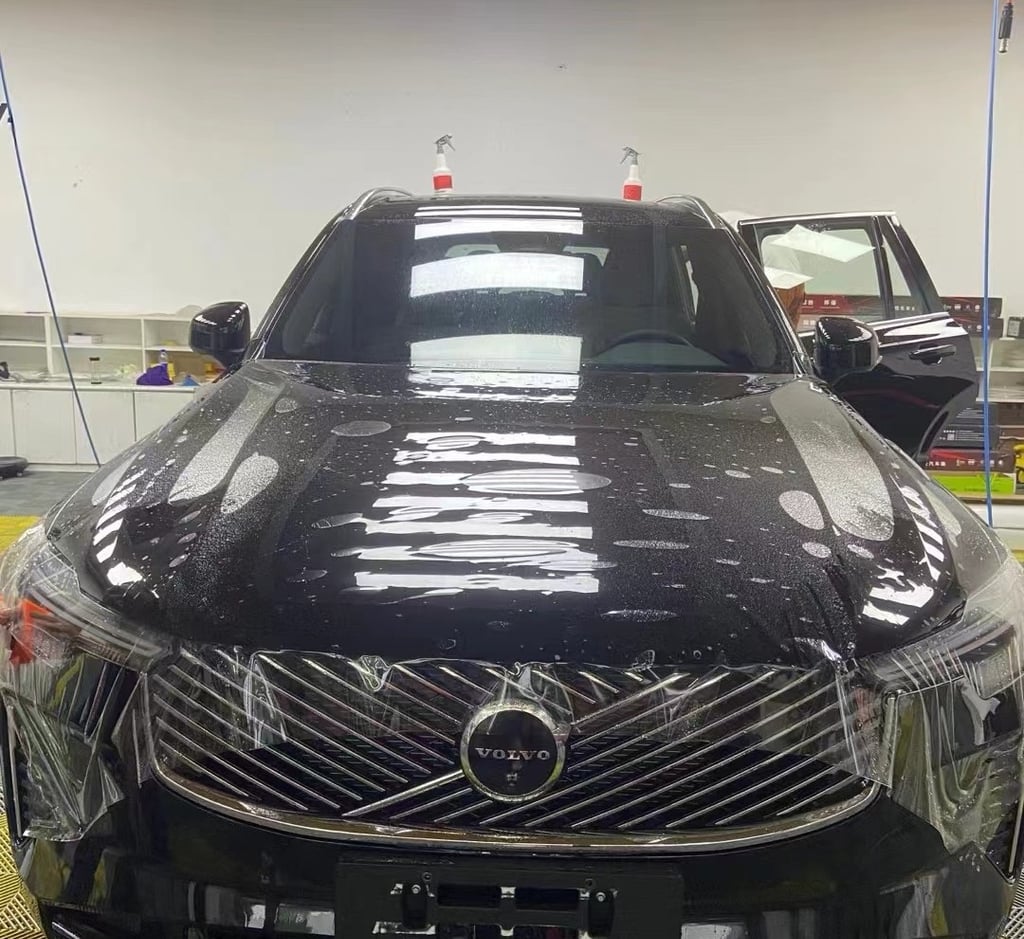PPF Layer Structure Explained: From TPU Base to Nano Coatings
Blog post description.
7/23/20251 min read


Introduction
As a PPF wholesaler, understanding the layered structure of paint protection film enhances your expertise and helps downstream clients make informed decisions. This article provides an in-depth analysis of the five core layers of premium PPF, revealing the technology behind each material and guiding you on selecting the right products based on thickness and coating innovations.
1. The Five-Layer Structure of PPF (Illustrated)
1. Release Liner
Material: Silicone-coated paper/PE film
Function: Protects adhesive until installation
Wholesaler Notes:
Paper liners are humidity-sensitive (store at <60% RH)
PE film liners better suit long-distance shipping
2. Pressure-Sensitive Adhesive (PSA)
Key Parameters:
Initial tack: 300-600g/25mm (for positioning)
Final bond: 800-1200g/25mm (long-term adhesion)
Innovations:
Solvent-free adhesives (VOC-compliant)
Low-temperature formulas (functional at -40°C)
3. TPU Base Layer (Core)
Material Science:
Aromatic TPU (superior UV resistance)
Aliphatic TPU (better yellowing resistance)
Thickness Guide:
Thickness Application Inventory Advice
6mil Daily protection (sedans) 60% stock
8mil SUVs/commercial vehicles 30% stock
10mil Specialty vehicles 10% stock
4. Functional Top Coat
Nano-Technologies:
Self-healing: Molecular recombination at 60°C
Hydrophobic: >110° contact angle (lotus effect)
Lab Data:
Pencil hardness: 3H-4H
Gloss retention: >90% after 5 years
5. Installation Protective Film
Design:
Low-tack overlay (prevents coating scratches)
Pre-cut grids (improves installation efficiency)
2. Matching Thickness to Market Needs
1. 6mil (0.15mm) – Economy Option
Best for: Rideshare fleets, quick-service shops
Wholesale Tip: Bundle with scrap recycling solutions
2. 8mil (0.2mm) – Premium All-Rounder
Advantages:
7% higher stretch rate (complex curves)
Passes SAE J400 stone chip tests
Target Clients: 4S dealerships, detailers
3. 10mil (0.25mm) – Professional Grade
Uses:
Off-road bumpers
Motorcycle fuel tanks
Stock Tip: Order-to-demand (lower turnover)
3. Coating Innovations for Competitive Edge
1. Self-Healing Coatings
Performance Comparison:
Type Activation Temp Repair Time
Standard 70°C 5-10 min
Advanced 60°C 2-5 min
2. Anti-Contamination Coatings
Generational Evolution:
Traditional fluorocarbon (90° contact angle)
Nano-silica (105°)
Graphene hybrid (115°+ antibacterial)
4. Practical Advice for Wholesalers
1. Storage Best Practices
Temperature: 15-30°C (prevents TPU crystallization)
Stacking: Vertical storage (avoids indentation)
2. Client Education Tools
Provide cross-section samples (visual proof)
Create comparison charts (for downstream sales)
3. High-Margin Product Mix
Recommended Bundle:
6mil entry-level (traffic driver)
8mil ceramic-coated (profit leader)
10mil matte (flagship product)
5. Technical Q&A
Q: How to identify inferior PPF structures?
A: Fold test – Quality TPU shows no whitening; PVC-based films turn white immediately.
Q: Which coatings suit different climates?
A:
Rainy regions: Hydrophobic coatings
Hot climates: Weather-resistant TPU
Industrial areas: Acid rain protection
